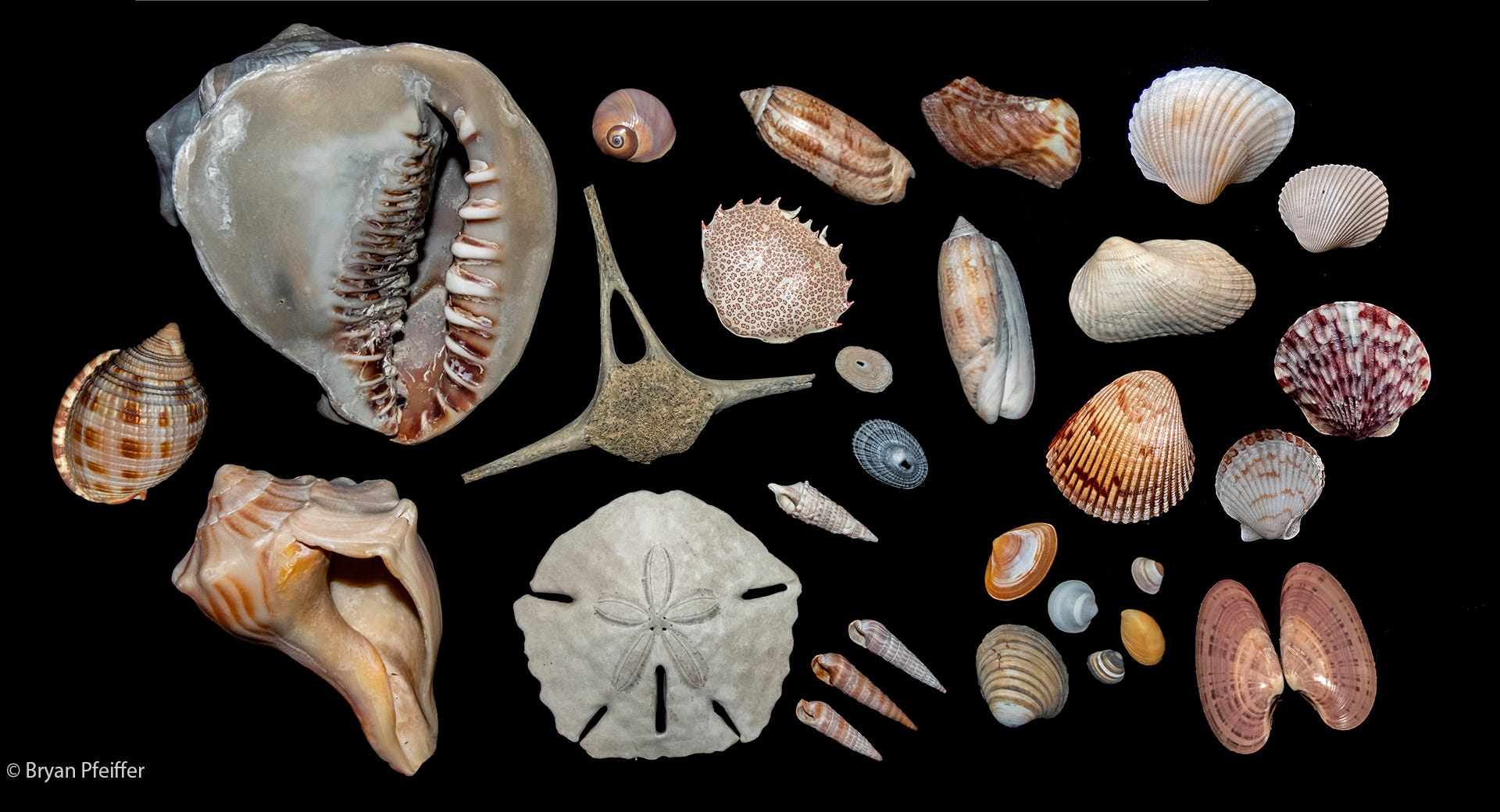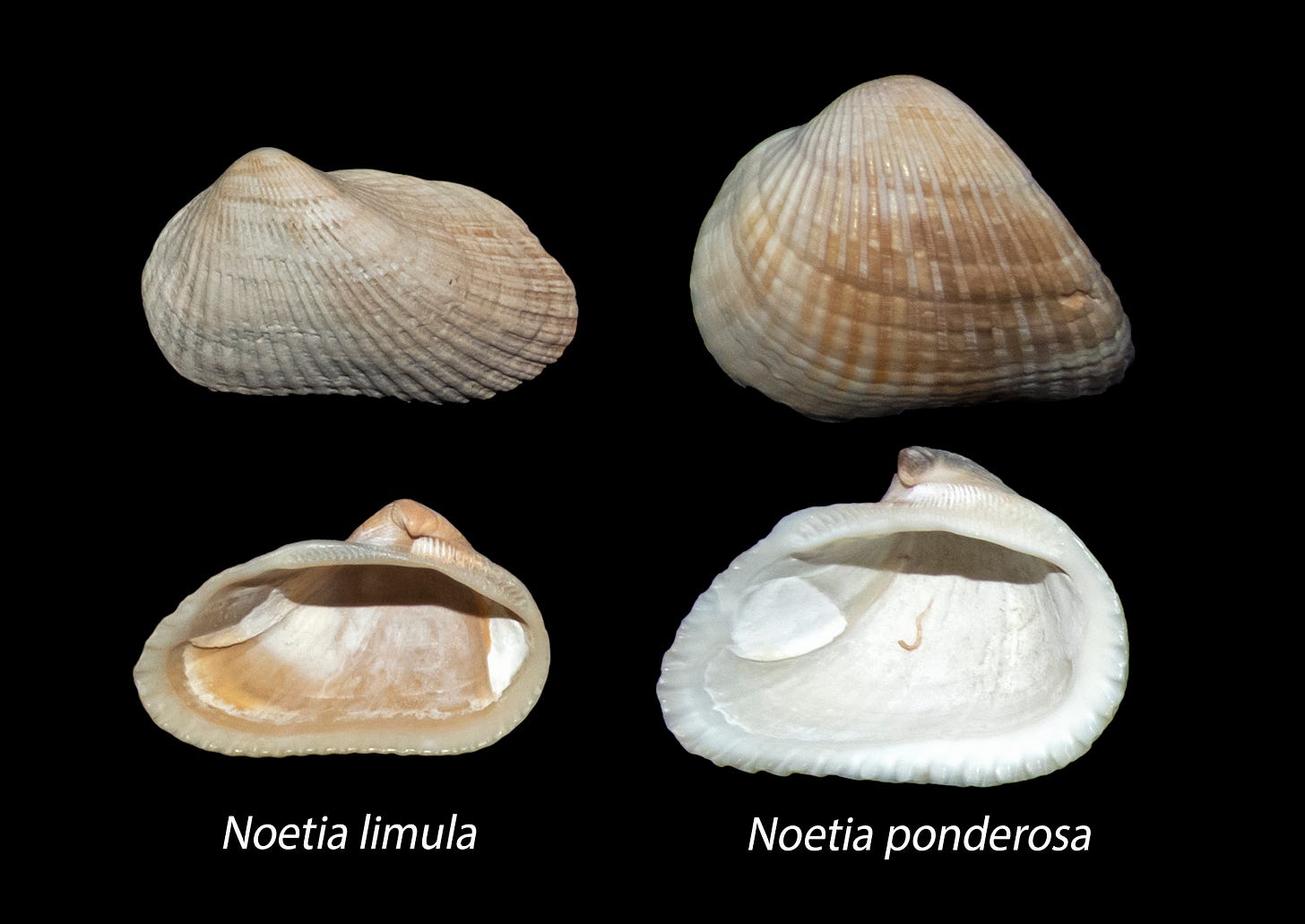ALONE ON A TWO-MILE SHOAL off the North Carolina coast, I did not expect to encounter extinction. My aspirations that morning were far less profound: walking, thinking, writing and learning to identify a few seashells along the beach.
But oceans are nothing less than seas of opportunity. Covering 70 percent of the earth’s surface, they conceal incomprehensible biological diversity that few of us will ever explore.
And yet the more I walked, stopping like a plover to pick at cockles and whelks, surfclams and sand dollars, the more it became clear to me that along the beach I could explore the sea beyond. That’s because twice a day the tides cast ashore the ocean’s winsome remains — some of the most ornate and precious manifestations of calcium and carbon on the planet.
It was there among the tide zone’s disarray and beauty that I touched extinction.
Most of us usually chase nature’s ephemera: Nearly every bird we watch flies away. Insects display a certain dismissiveness before they take off. Herbaceous plants will flower and wither and die. The satisfaction of seashells is permanence. I can pick one up, dust it off, observe it from every angle, even pocket it should I care to spend more time with it later at home. Among the shells, I need no binoculars, no net or any other gear. Only my senses, including a sense of adventure and possibility.
When I had set out to learn seashells — during a retreat near the Rachel Carson Reserve, a short paddle out from Beaufort, N.C. — I was like a kid learning to walk or a novice birder elated by American Robins, Song Sparrows and other common birds. I began with the abundant shells on the beach, including the various arks, which are classic bivalves that might crudely be passed off as clams. After only a few days I could distinguish, even while walking past them in the sand, the subtle differences in shape and curves among Incongruous Ark, Blood Ark and the ever-present Ponderosa Ark. There was satisfaction in that, like knowing the maple species in my forest.
And then I noticed a shell a lot like the others but not quite right. It matched nothing I had been seeing on the beach nor anything in my field guides. At home I took some measurements and pictures and asked experts for an identification.
After only a bit of confusion on the part of the malacologists, my shell turned out in all likelihood to be an ark (without a common name) called Noetia limula. It lived from the late Pliocene to early Pleistocene, which basically means this bivalve went about its business through the ages and went extinct about 1.8 million years ago.
And yet on the beach I held its remains in the palm of my hand.
Most seashells we encounter are relatively new, only recently separated from their living or dying inhabitants. Some might be as old as the beach itself. My Noetia shell was a fossil. But unlike most fossils, which often appear to us as abstractions embedded in rock, it did not differ much from the myriad of other seashells on the beach. Nearly 2 million years ago, the shoreline of North Carolina wasn’t much different either. Maybe that’s why my shell was to me more than a fossil, more than artifact.
Nobody was on the beach to protest or witness or lament — or cause — the extinction of Noetia limula. It passed naturally. After all, extinction, notably mass extinction, has been a way of life on earth for hundreds of millions of years, owing to shifting continental plates, rising and falling sea levels, volcanic eruptions, asteroid strikes and their ilk.
Now add to that litany of calamities human beings. We have the power to warm a planet, to deplete and destroy its vast biological diversity, and yet seemingly no capacity to do much of anything about it. Science and laws, sustainable development and carbon offsets — they aren’t coming to our or the planet’s rescue. At least not anytime soon. Neither are COP gatherings of nations over climate and biodiversity.
Until they might, what do we have? What is our faith? Well, we have ourselves, the stuff that makes us human: love, art, music, poetry, literature. And we have our intrinsic capacity for wonder in nature.
I believe that wonder in nature still resides in all of us. It’s in the child dipping a net into a frog pond, an adult still charmed by fireflies, or any of us who can still hear the ocean in a seashell pressed to our ear.
Or maybe it’s the recognition that anyone, fragile and curious and alone on a beach, can find wonder in touching something that lived and died on Earth 2 million years ago. That is my faith.
Postscript
Here is a closer look at my shell compared to the more common Ponderosa Ark (Noetia ponderosa). With this as a reference, you yourself can now find extinction in my banner image above.
Credit for the identification of Noetia limula goes to Dr. Lyle D. Campbell, Distinguished Professor Emeritus, Geology, University of South Carolina.
Fossil shells like Noetia limula aren’t that uncommon. By my very rough estimation, I looked at some 250,000 shells (and other marine remnants) during my visits to the shoal, among which I found three half shells of N. limula.






Love it, Margie. Sort of like the gastropods embedded in the floor tiling of the Vermont Statehouse -- lots of history to walk upon!
Thank you. Your writing is engaging. Recently I have had a hard time settling down to read. I have no problem with your essays. They inspire even in these dark days. Thank you again.